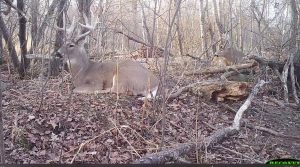Eastern US Topography Deer Plans
One real challenge of a property with lots of elevation change is defeating the eyes of bedded deer as we approach evening stands. Deer prefer to bed on the leeward side of this topography, meaning as we walk with our face into the wind, they are up above us on a bench looking down. If they see us heading to a food plot or deer stand, they often slip back over the top of the ridge or avoid our hunting spot until well after dark.
Another challenge can be morning access. If the deer are feeding atop the ridge, we can set up morning sits that have us at the bottom edge of bedded deer, or somewhere on route to their bedding benches. If the deer are feeding in the bottoms at night (rows crops/Ag) we need to get past them and into our stands. Very difficult.
https://youtu.be/8wCdPKb0S9c
Compounding the whole situation is the thermal activity of our set. In the evening the thermals blow up hill until about 40 minutes before dark when they swirl and then switch to a downhill pull. Mornings are the opposite. The deer know how this works and use these thermals both for cruising does (they can scent check both sides of the ridge from one trail on leeward side), and detecting danger in the evenings (staging off plots in low spots using sinking thermals to detect danger before entering). Winds in the hills are advantage deer – which is why they hold giants.
Prevailing winds, thermal currents and the view afforded by changes in elevation can dictate where the local deer herd spends its time. 
Bucks using a bench on leeward side visually searching danger from below

